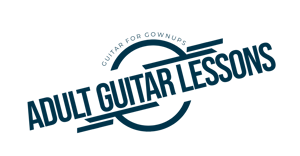You got it, might as well use it!
You can use it to hitch a ride. Roger Ebert has made a fortune using one or both – up or down. It’s universally recognized as the sign for a number of affirmatives – “okay”, “good job”, “looking good”, “it’s under control”, among others. It’s also the appendage that one would be inserting “where the sun don’t shine” in a well known metaphor for aimlessly idling one’s time away. We are, of course, referring to the thumb.
In terms of playing guitar, the thumb is like the “red headed step child” of the playing hand. More neglected than even the “pinky” finger (but that’s for another article).
The focus of our playing hand, the hand that attacks the fret board, is typically centered on the first three fingers. These are the easiest to use. They are stronger, longer and faster than the pinky or thumb, so they face the call to action much more than their “weaker” siblings.
But as guitar players, we would be wise to make full use of all of our appendages when playing. In fact, we might be surprised to find that the effort that goes in to incorporating the use of the thumb into our playing technique will result in making some tasks on the guitar neck even easier!
Here are some uses for the thumb when playing guitar:
1. Walk Downs
2. Chord Formations
3. Muting
4. Added Pressure
5. Playing Lead
Let’s take a look at some of these:
1. Walk Downs – The thumb can be put to good use when playing a “walk down”. This is when you start on one chord and “walk down” to a resolution chord, typically by way of a “passing” chord in between.
When the bass notes of a walk down occur on the 6th string (low E in standard tuning), it is often easier to use the thumb to play some or all of those bass notes, rather than trying to use the fingers.
A good example would be the commonly used walk down from an open G chord, down to an Em. The passing chord between these two chords is normally a D/F# (D over F#). The easiest way to play this chord is to form an open D chord as normal, then wrap the thumb up on to the 2nd fret of the 6th string (F#). This method makes for a smooth transition.
2. Chord Formations – The thumb can also be used to assist in the formation of chords. Many chords are conducive to using the thumb. For example, a minor 7th chord could just as easily be played with the thumb.
Jimi Hendrix was known for making use of the thumb to form chords where most of us would use barre chords. Rather than “barring” the 1st finger across a fret to make a standard barre chord, he would often use his thumb to play the bass note, form the rest of the chord like normal, and then play the remaining notes as necessary with the first finger.
Try this next time you pick up the guitar. Play an A barre chord at the 5th fret. Now lift off your 1st finger that is making the “barre”. Then take your thumb and use it to play the A root note on the 5th fret of the 6th string. Finish by placing your 1st finger in the 5th fret of the 1st and 2nd strings. You are playing the same identical notes as the barre chord version, just with a different hand formation. Try this with minor barre chords as well. It can be a little liberating once you get used to it!
3. Muting – The thumb is a great tool to use for muting strings when strumming rhythm patterns. For example, an F chord in the open position is normally played using only the first four strings. It would be difficult to perform some aggressive strumming maneuvers without striking the 5th and 6th strings. Using the thumb to lightly mute these two strings will solve the problem. The same can be said for many open chords that do not use all six strings, such as the C, D and Am chords in the open position.
4. Added Pressure – There is a natural tendency when playing guitar to keep the thumb in a position that is wrapped over the top of the neck. There are times, however, when you may need some extra finger pressure on the strings to form a chord or play a lick. That extra pressure can often be found by bringing the thumb down to a position where the ball of the thumb is planted firmly on the middle of the back of the guitar neck. This increases the amount of pressure for the fingers and provides extra pivoting power.
In terms of conventional guitar instruction, this thumb placement position is often considered to be the accepted way to play guitar.
5. Playing Lead – There are some players who incorporate the thumb into playing lead runs and solos. It is really a matter of personal preference and what you get used to. I have never mastered this approach to playing leads but have seen other players use it effectively.
Regardless of your guitar playing style or approach, there are probably times when using your thumb when executing chords and licks might make good sense, and, make life a little easier. So when your fingers go out for a “dance” on the fret board, don’t forget to take the thumb along for the ride!



